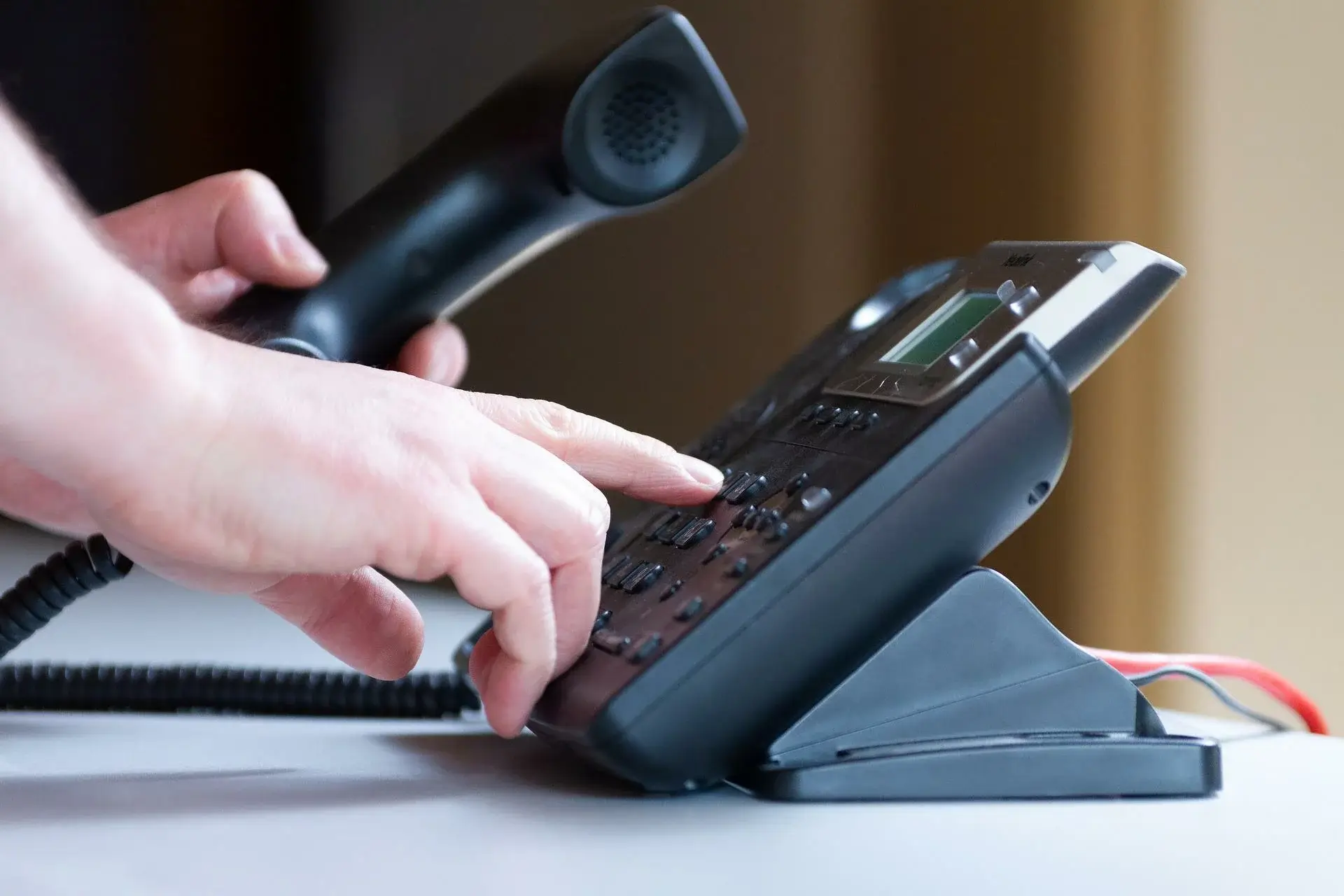February 24, 2020 |

The labor market has been experiencing significant changes over the last few years. In California alone, the unemployment rate has dropped from 11.7% in August of 2011 to just 3.9% in October of 2019. Despite this massive increase in employment, businesses are still plagued by unemployment claims that can create a large expense. The Employment Development Department reported a rise in the number of people who filed for unemployment benefits. California has the largest unemployment system in the US. Despite the employment rate rising steadily over the years, the EDD stated that 2016 saw unemployment checks being distributed to over 800,000 people which translated to close to 33 million dollars paid out in unemployment benefits daily.
The Employment Development Department was formed over seven decades ago to act as an economic form of security against the repercussions of unemployment. It was primarily structured to pacify the financial stress experienced by people who get unemployed without fault. Unemployment claims are increasingly becoming inevitable due to the economic crisis and the revolution of labor laws in California.
Unemployment claims can have a detrimental impact on the financial and operational aspects of a business. The financial implications are largely dependent on the date of claim, the length of time worked, the employment unit, nature of separation and number of employees among other underlying factors. Depending on the number of unemployment claims approved, the unemployment taxes that the employer is required to pay increases as well.
How The Unemployment Claims Process Works
The unemployment claims program in California is mainly financed by the taxes that are paid by the employers on the gross wages paid to each employee. The amount paid by employers to the unemployment tax pool is different, depending on their specific tax rate.
You Contribute To A Pool
Every time you make a payment to the government for your employer unemployment tax, it goes into your pool or “bank”. Unemployment claims awarded to former employees draw from the pool of funds that you contribute to the Employment Development Department. The money paid is not deducted from the employee’s salary at any point. The number of approved unemployment benefits claims that may have been filed against you primarily determines this fixed tax rate.
Claims Against You Draw From It
The more that is drawn from the unemployment pool by claims that have been made against you, the higher your tax rate rises. It works similar to an imaginary bank account. Each contribution you make when you pay your employer unemployment tax goes into your “bank”. Each claim that is approved and paid is drawn from your “bank”. The more you have coming out in approved claims the higher your tax base is set at to ensure that you are putting more money in than is being taken out.
he Amount You Pay Is Determined By Claims Made Against You
Too many unemployment claims awarded could considerably raise your tax percentage rate. The tax percentage rate is directly connected with the number of unemployment benefits awarded. As the amount of awarded claims grows, so does the tax rate on your total gross payroll.
Having your unemployment tax rate increased can have a serious effect on your bottom line. A tax increase of 3% on a gross annual payroll of $300,000 will cost your business an additional $9,000 per year. As your company grows, these numbers get larger and have a greater impact on your costs and profit.
Most businesses that are new or are just starting to hire employees will start at a lower unemployment tax base of around 1.5%. This amount can go as high as 6.2% depending on the number of claims that have been awarded against your business. If you are in an industry with high turnover or seasonal employment needs, your tax base is more likely to be high and remain high. The larger your payroll, the more significant of a cost these increases can represent.
Your unemployment tax rate is typically adjusted each year depending on the amount you have contributed and the amount that has been taken out. The unemployment rates in California range between 1.5% and 6.2%. You should receive an annual statement from the EDD each year that shows how much has been contributed to your “bank” and what has been paid out. The statement will also give you a grade (such as B- or F+) and tell you what your new tax rate for the following year will be.
Preparing For Unemployment Claims As A Business Owner
If the employee is in violation of the company’s rules and regulations pertaining to being late or not showing up without calling in advance, give a verbal warning first then follow up with subsequent written warnings as stipulated by the labor laws before resorting to termination. Many employees use this point as a viable proof of unreasonable termination.
Create Strict Processes For Disciplinary Actions
If a disciplinary course of action is taken such as a suspension, do this in writing as well. Ensure that you provide the employee with a copy while you keep one in a file for future references.
Once an employee decides to quit, ensure that they do this in writing. Have a policy where an employee is required to submit a written notice in a particular time frame before quitting. Keep in mind that while most voluntary quits do not qualify for unemployment, some do. If the EDD finds that the employee had a reasonable explanation for quitting their position, the claim may be awarded. This could include things such as not having reliable childcare or transportation to and from work.
Keep Everything In Writing
Documentation is the key to the defense of unemployment claims. Your company policies and disciplinary procedures should be in writing, followed in every case and documented in your employee files.
Your documentation, as well as written policies and procedures, will likely be used when contesting an unemployment claim for an employee who was terminated for just cause. Your employee handbook is critical in this process as well. What may seem like common sense to you may not be seen that way by someone else, including the EDD. For example, you may think that when you terminate an employee for a “no call no show” or job abandonment that their claim for unemployment will be immediately thrown out. That is not the case. In fact, you are likely to receive a call from the EDD asking if the employee knew they were scheduled to work if the employee had been warned that not showing up for work would result in termination and asking for a copy of your handbook that states that employees who do not show up for work without calling in will be terminated. Even after you provide all of this information, the claim may still be awarded if it is shown that the employee had a reasonable reason for not showing up for work and not calling in.
Steps Of The Unemployment Claims Process
While it can seem complicated, the process for unemployment claims being filed and managed is pretty simple and straightforward. As an employer, your responsibility is to present the facts from your side and the rest is left up to the unemployment office to make a determination or ruling.
Events Which May Start The Unemployment Claim Process
Anytime an employee is no longer working, they can file for unemployment. This does not mean that it will be awarded but the application process is started any time an employee applies for benefits through the state unemployment office.
The employee ceases employment by one of the following:
Termination
This can be due to infringement of company policies or infringement of his/her employment contract for a myriad of reasons. Termination may also occur due to no fault of the employee or employer. The employee may not have been the right fit for the company and/or position they were hired for.
Resignation
In this case, the employee decides to leave voluntarily and hands in a written notice stating the reasons for leaving the company. In some cases, there may not be a formal resignation. The employee may have simply stopped showing up for work without communicating.
Layoff
Employees may experience unemployment due to seasonal layoffs, a reduction in workforce at the company due to a decrease in business, the elimination of the position they held, or a variety of other reasons. Typically a layoff would qualify for unemployment benefits since employment ended for a reason other than negligence on the part of the employee.
Hour Reduction Without Reasonable Explanation
The former employee proceeds to file a claim with the Employment Development Department any time after they are terminated or even when the hours are reduced without a legitimate cause of action. The claim will highlight why the employee feels that they are entitled to benefits despite the termination.
Employee Files Claim WIth The EDD
The EDD takes up to seven days to go through the claim and possible evidence provided and depending on their judgment, they either send the unemployment benefits claim to the employer or dismiss the claim. The EDD has set a list of requirements that the employee must have adhered to so that they are considered eligible to receive the unemployment benefits. These requirements include;
The requirements that an employee should satisfy in order to receive unemployment benefits include:
- The employee must be unemployed or have their work hours reduced without cause of action.
- The employee should be vigilantly seeking work.
- The employee must have earned enough money during employment.
The EDD Investigates
The EDD then sets up separate interviews with the employee, employer and other people who are relevant to the case to investigate either side of the matter. This process typically starts for the employer with written notice of the claim that is mailed. The front of the form will state the employee name, the date they claimed they last worked and the reason for their employment ending with the company. The back of the form gives the employer an opportunity to file a response that either contests or confirms the information provided by the employee.
The EDD Decision Is Made
In a case where the employee’s claim is eligible for compensation, the EDD sends the notice to the employer who either contests or approves the claim.
The Right To Appeal The Decision of the EDD
Once the ruling is returned, and the claim is passed through, the employer can appeal the decision claim via mail to the EDD in no more than 30 days of receiving the ruling.
The appeal should contain:
- Name and address of the business
- Employee’s social security number
- Employer’s reserve account
- Reason for the appeal
- A copy of the ruling the employer is appealing
- Reasons why the appeal surpassed the 30 day period in case it is delayed
The appeal is presented before the Administrative Law Judges who determine the ruling that was given before. If the appeal is accepted, the ALJ conducts hearings with both parties present. After the hearings, the ALJ gives a ruling based on the testimonies, evidence, and witnesses that each party provides. In case the ALJ gives a ruling that is not acceptable to the employer, they can file another appeal with the California Unemployment Insurance Appeals Board.
What To Do When You Receive An Unemployment Claim
Once a former employee files for unemployment benefits, the Employment Development Department will notify you by mail and send the notice of unemployment insurance that the employee has filed. Once you ascertain that you have received this claim, you can respond in one of two ways including;
If You Are Not Contesting
There are some cases where you may decide not to dispute the claim and pay the value of unemployment benefits stipulated by the EDD. This can be a fairly common occurrence depending on your industry and the nature of work you do. There are times when employment ends and it is not due to an error or misstep on the employee’s part. They may have been laid off for the end of the season, had their hours reduced or been in a position that was eliminated by the company. It could also be that the employee was not the right fit based on their skill set or personality. They didn’t do anything wrong but employment was ended by you or based on a mutual decision between you and the employee. In these cases, the employee has a justified claim for unemployment benefits and as an employer, you would not typically contest those claims.
In the case where you decide you are not going to contest the unemployment claim made, you can complete the form with the details of why the employee is no longer working for you (and you can be honest), then add “Employer does not intend to contest Claimant’s claim for unemployment”. This does not guarantee that the claim will be awarded as it is up to the EDD to make that determination. There is a possibility the claim will still be denied and the employee may appeal that decision. If they do appeal you will receive notice of an unemployment hearing to hear the appeal. Since you are not contesting the claim, you can simply not show up to the appeal hearing. Again, this does not mean that the claim will be awarded. It simply shows that you, as the employer, are not contesting the claim.
If You Are Contesting
Once you have received the claim, you technically have ten days to refute or contest the claim in writing. Your response should be detailed and should contain all the relevant material that will highlight why the former employee should not be eligible for the unemployment benefits.
The most certain ways to ensure that the contested claim does not go through is to dispute that the former employee, quit voluntarily, violated company policy, or was terminated for gross misconduct. These allegations should be substantiated by copious amounts of evidence.
You should also submit evidence that the violations that led to termination have been repeated and each time, the employee received a written warning reprimanding the offense. The labor laws of California have set a standard number of written warnings an employee can receive before being terminated. The EDD backdates the written warnings and uses this evidence to weigh the plausibility of your dispute. The violation or breach must be intentional and must be directed to disdain your company’s interest. Disputes of employee negligence or generally poor performance do not substantiate a dispute claim. The misconduct must essentially be purely work-related.
Unemployment Claims Can Have A Negative Effect On Cash Flow
The threat or fear of unemployment claims can often lead employers to keep an employee who is not performing or not following company procedures, longer than they should. Having sound policies, documented disciplinary measures and the peace-of-mind that you know how to handle an unemployment claim when you receive one can help mitigate this fear and allow you to focus on having the right employees working for your company.
The best way to avoid unemployment claim tax increases is to focus on your hiring process and retention by being acquainted with capable staffing agencies that will assist you in the hiring process. Hiring a new employee can prove to be a daunting task due to the fact that you might not know the right person for the job and their legitimate background history.
It is imperative for employers to use staffing agencies to offload unemployment claim liability strategically by running employees through staffing agencies for set trial periods to eliminate the risk of increased unemployment tax. Staffing agencies are able to absorb this liability for you by employing your new hires during the time period where there is a greater potential for turnover.
Make a great first impression at your next job interview.
BROWSE OUR JOB BOARD TODAY!
This blog post is intended for informational purposes only and does not constitute legal advice. No attorney-client relationship is created between the author and reader of this blog post, and its content should not be relied upon as legal advice. Readers are urged to consult legal counsel when seeking legal advice.








